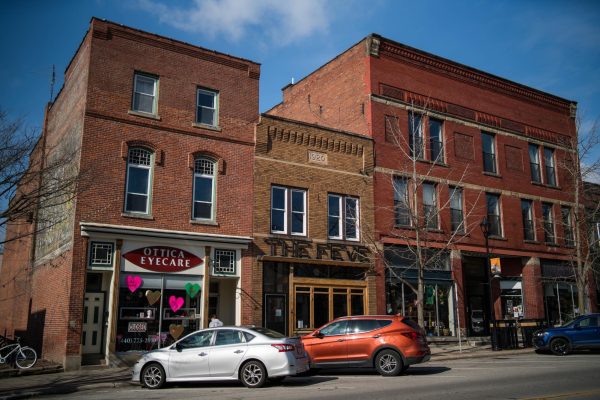Seven Years Later, Students for Energy Justice Continue Protests Against NEXUS Pipeline
Photo courtesy of Sydney Paunan
Students walked to the NEXUS pipeline, to protest its location in Oberlin.
On Oct. 2, Students for Energy Justice, organized a walk against the NEXUS pipeline. The climate justice student group focuses on supporting communities impacted by fossil fuel emissions. A group of approximately 20 SEJ members and students walked to the pipeline, which is located near the Oberlin Recreation Complex 20 minutes south of campus. During the walk, they discussed fracking, eminent domain, and past community activism against the pipeline.
In 2014, Spectra Energy moved forward with its proposal to construct the pipeline and was met with swift condemnation from the Oberlin community, along with claims that the pipeline would violate the 2013 Oberlin Community Bill of Rights. This Bill of Rights was a product of Oberlin’s participation in Ohio’s community rights movement, which sought to create legislation that enables community self-governance. In Oberlin, this meant ensuring the protection of the College and City from the environmental harm of pipelines, fracking, and other hazards to public safety.
In later years, these principles were put to the test by motions passed against the Bill of Rights. Throughout 2015, bills were passed blocking citizen initiatives, including the Community Bill of Rights protecting Oberlin from environmental hazards.
In response to the 2015 motions, SEJ members began protesting by instituting community charters and city ordinances to prevent the construction of the pipeline. Up until 2018, the group attended City Council hearings about the construction of the NEXUS pipeline. Despite SEJ-led efforts, the project went into operation in September 2018.
The NEXUS pipeline delivers gas supplies starting in southeastern Michigan, through northern Ohio, and up to Ontario, Canada. The pipeline travels directly through Oberlin city limits and is designed to carry up to 1.5 billion cubic feet of natural gas daily.
“The full path of NEXUS allows for the delivery of natural gas supplies directly to consumers,” the NEXUS website states. “By expanding access to natural gas in these markets, NEXUS provides consumers across the region with affordable, cleaner-burning and domestically-abundant natural gas to help meet the growing demand for cleaner power generation, industrial and commercial use, and home heating.”
College second-year Sydney Paunan attended the walk and took note of the area surrounding the pipeline.
“It runs by residential areas, soccer fields, the bike path, and a senior care facility,” Paunan said. “Plus, the areas in the blast zone have high concentrations of low-income residents and residents of color. That was not an accident. All of these people and community spaces would be directly impacted were there to be a leak or explosion.”
Paunan feels that the walk was a great reminder of the importance of getting involved in Oberlin and building community resilience.
“Knowing your neighbors and local community has real power,” Paunan said.







